Text
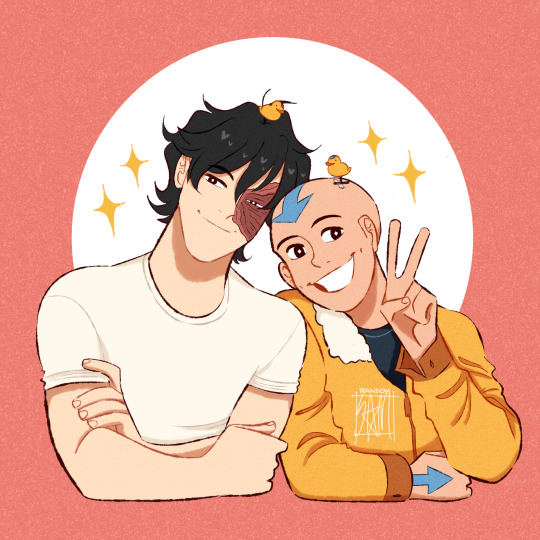
duck hair clip trend with zukaang <333
#ahhhhhh 😝#zukaang#fanart#modern au#modern au zukaang u will always have my heart!!!#this is so cute and fun#and I deeply appreciate keeping aang short
5K notes
·
View notes
Text
“Let us turn now to the youth’s lover, or nenja. Unlike the term wakashu, nenja contained no age signifier, meaning simply the ‘person [implictly male] who thinks of ‘a particular youth.’32
32. The character nen, which I have rendered here as ‘to think of,’ is difficult to translate precisely, falling somewhere between rational ‘thinking’ and emotive ‘feeling.’ Its root connotation is a dwelling or focusing of mental energies upon a particular object, as seen in such compounds as nenbetsu, which refers to the practice of ‘praying to [i.e., focusing one’s thoughts upon] the Buddha,’ and nengan, a ‘deeply felt desire.’”
Gregory M. Pflugfelder, Cartographies of Desire: Male-Male Sexuality Discourse, 1600-1950

#hunter x hunter#hxh#killugon#leopika#zukaang#killua#gon#nen#thinking too about how this language echoes zuko’s singular focus on the avatar#and aang’s reoccurring reflections on his interactions with zuko#but really interesting for hunter x hunter!!
3 notes
·
View notes
Text
“Gojin Ishihara, once known as an illustrator of monsters in boys' and girls' magazines, moved on to pornographic magazines in the 1970s under the name Gekko Hayashi. He was one of the main illustrators for the gay magazine "Sabu". In the boy’s love magazine, “June”, he became popular among Yaoi (boys’ love) fans for his outstanding drawing skill. He is a pioneer in the genre of boys’ love and his dazzling sensuality still attracts many readers.”
—




林月光 Hayashi Gekkō (石原豪人 Ishihara Gōjin)
110 notes
·
View notes
Text
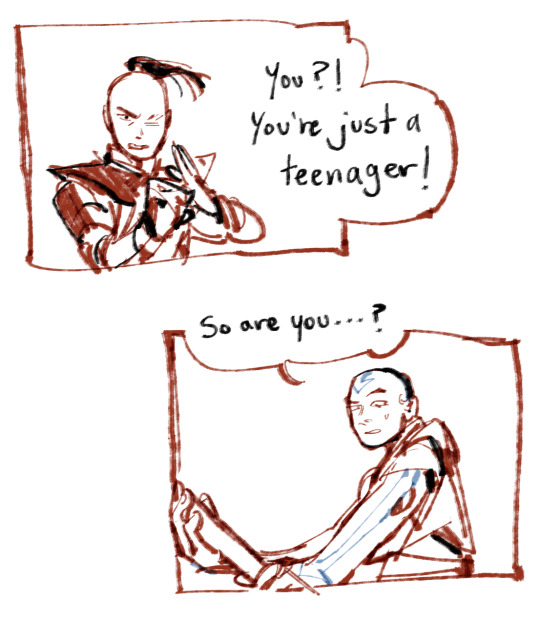

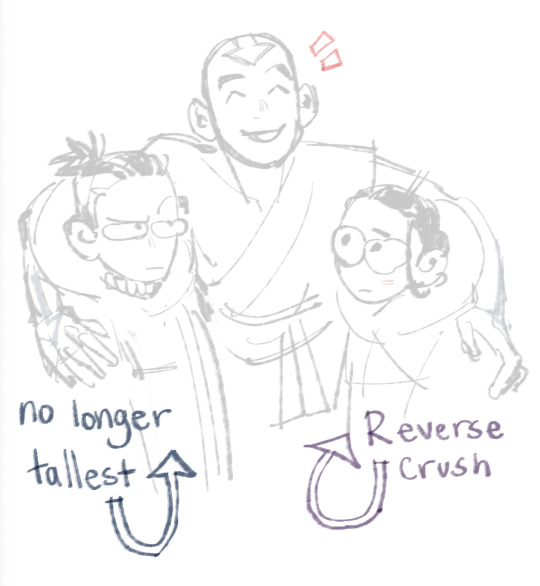

au where Aang gets told he's the Avatar (and subsequently frozen) at 16 like he was supposed to.... I think it would change a lot honestly
21K notes
·
View notes
Text

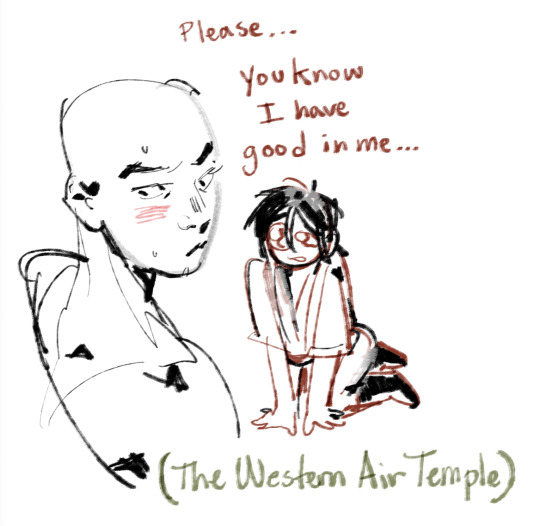

some more zukaang doodles a la flavor de aged up Aang!au......
3K notes
·
View notes
Text
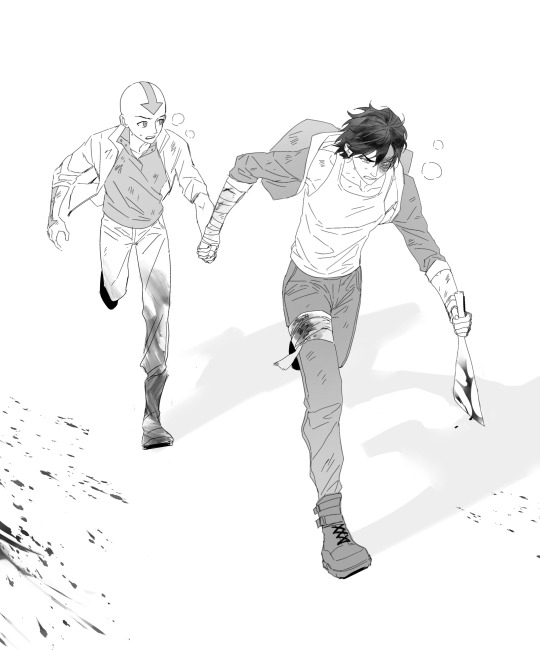
what if TheWalkingDead AU
224 notes
·
View notes
Note
Ooph, unfortunately can’t say I agree with much of your analysis here, boo.
I’m not gonna deny literary and artistic merit for a show because of its genre, age-group, and production company. I spend time with it and keep my eyes and ears open to literary and cinematic strategies and references—doesn’t matter where it comes from, except how that might limit or influence how it approaches its storytelling.
I also don’t share the bad faith perspective on (or perhaps it’s the lack of familiarity with) the writing process and team for the show, which involved many more people’s writing and input than the two guys you disparage. Critiquing the writing or the writers doesn’t assist my goals of analyzing the work as it stands, which is not to kill the authors off, but to give the work the authority of its present existence and influence within the contextual contingencies of its production and historical situation. In the limited dichotomy of Watsonian vs. Doylist approaches you reference, it’s both but certainly leans towards the Watsonian.
And, again, you are looking at my analysis of a single-shot requested by a follower. I would say it’s an analysis that stretches and makes leaps that were more fun to attempt than felicitous—I’d stand much more firmly behind my long form analysis of Zuko and Aang’s capital-P Platonic relationship development throughout the series. But, writing like the one above still provides opportunities to make meaningful discoveries, even though the foundation they stand on is shaky. The orange and blue motif in the series, for example, and its relationship to yin and yang, which I defined in my response will be something to which I’ll refer plenty in the future.
Glad you’re excited about the show enough to seek out conversations and analysis online, but your perspective isn’t a great starting place to engage in conversation about the show, especially on my blog and with me, which are specifically interested in approaching the show as an intentional and complex work of art, made by many hands and minds, that provides a thorough evocation of American Zen Buddhism in conversation with other Buddhist and East Asian philosophical approaches (and the zen of it clearly complicates the beliefs about romantic and sexual attachment).
If you want to discuss atla headcanons, fanons, and/or the the failures of the writing, there are lots of other blogs and posts who share your passion! My blog and posts are def not gonna be for you, and that’s fine. Flameo, hotman!
hey! i really enjoy your analysis of aang and zuko's relationship, and i was just wondering if you have any thoughts on this:

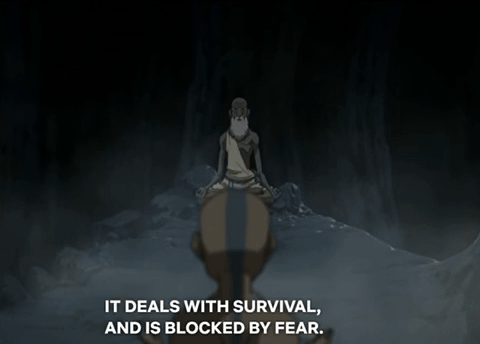
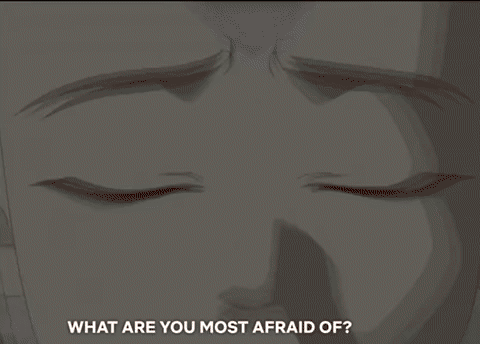
when aang considers what he's afraid of the most, he doesn't just see zuko - he sees the blue spirit. why do you think his fear is linked to that mask? zuko was the most amicable towards him when he put that mask on, and was hostile every other time.
Ooooh!! This is such a rich and meaty question!! And it's something I've wondered about but never dove into before.
I guess there are a couple of questions we need to explore. One, do we want to begin to analyze this from Aang's perspective or the series' themes, which, when put together, should offer us the fullest idea of what the intent might be? If we begin with Aang's perspective, then the next question we need to next ask what is Aang's view of Zuko and/or the Blue Spirit at this point in the narrative? My worry about beginning at that intimate level is that we might miss possible connections that a thematic understanding might facilitate and may, like many fandom analyses, leave it at a character level when, in fact, the characters exist to serve larger philosophical purposes, especially in a show like ATLA.
So, we'll return to those questions about Aang after we visit some questions about the broader themes here. We know for a fact that the team did a lot of research into Eastern philosophies that they had to then pack down into 24 minute episodes, preserving a surprising amount of complexity not in the words but in the actions and visuals. The 2 part Crossroads of Destiny episode is probably the most evocative of this practice. The four-way fight scene is celebrated for the way it masterfully shows character development through fight choreography. Then, Aang's crystal chamber he forms to master the Avatar State is a direct reference to a statement about pre-enlightenment in one of the foundational texts about Japanese Zen for American Buddhists, "The Three Pillars of Zen." The rapid explanations of the seven chakras with Guru Pathik might seem like a a skimming of Tantric beliefs based on the brief statements and processing, but it's another prime example the way ATLA suffuses meaning beyond the script.
What more can be said about the Earth (also called the Root or Muladhara) Chakra, then, that the show might reflect without stating it explicitly. Guru Pathik explains that the Earth Chakra "deals with survival." Is there any subject more prescient than that for our protagonist, the single survivor of an otherwise all-encompassing genocide? Other accounts of this chakra that I can find explain that it's at this chakra that one can observe that their base needs are being met--enough food, enough water, etc. There seems to be a subtle witnessing to the effects of PTSD here then. With this chakra untouched, unopened, and out of balance, Aang within his mind has been living in a state of emergency without knowing it, believing himself at a core level beyond his consciousness to still be under immediate threat even in moments of peace like his meditations throughout the opening of his chakras. "Your vision is not real," Guru Pathik points out, not to say that no danger exists for him in the world but to illuminate the immediate reality surrounding his person.
The memories and visions that flash during the sequence hint at how fear conceals deeper realities and thus possibilities. I'll start with the clip of Katara sinking away from the first episode of Book 2, "The Avatar State." The Earth Kingdom General performed this cruelty after many other attempts to force Aang into suffering to gain the Avatar State. Believing he lost another person he loved, the state was triggered despite the actuality that Katara was unharmed. The fear of her loss overwhelmed Aang, and even her safe return could not assuage his traumatic response. The Blue Spirit incident forms a striking parallel to this event, in that case. Aang felt himself helpless and in danger only to discover the opposite: the seemingly malevolent force freed him from danger. Further, that Blue Spirit Mask concealed Zuko who, by the end of the series, will be revealed (to himself and) Aang as an ally and a friend. The shadowy image of Ozai, then, connected with these two fear-inducing semblances, can be seen then as perhaps the ultimate foreshadowing of Aang's ultimate success in pacifying Ozai. Put in the context of this chakra and the other two visions, it frames the Firelord as a facade meant to induce terror and distance, when in reality, life and humanity still lay behind the horrifying megalomania.
Concerning the Blue Spirit element specifically in the series, I want to explore one more factor within the series before getting back to Aang's character relationship in this moment. Blue has a running symbolic theme within the series that seems especially relevant here since it played a huge role in a highly symbolic part of the directly previous episode, "The Earth King." As Zuko rides out his psychogenic fever induced by releasing Aang's bison and abandoning his Blue Spirit mask, he is confronted in his dreams by a blue dragon voiced by Azula and a red dragon voiced by Iroh. I felt really confused by these two would-be shoulder angels for the longest time (literally until I was sorting my thoughts out to write this) because Azula's blue dragon is the one who entreats Zuko to rest, which even in Grey Delisle/Azula's clearly threatening tone--she even ends the temptation by saying "sleep just like mother!"--seemed to be what Zuko needed to do as opposed to the red dragon's exhortations to get out. I could see how sleeping might also refer to accepting his upbringing without thought, but why blue? The layers upon layers of possible meaning overwhelmed me.
I posit that blue in the series, especially when put in relationship to red/orange, as it is in the dream sequence, the dynamic between the water tribe and the fire nation, the fire of zuko and azula (especially the final agni kai), and the energy-bending of Aang over Ozai in the finale, ought to be read as Yin (making red/orange yang). Yin is passive, retractive, and receptive, which makes the invitation to rest by a blue dragon make perfect sense. Yin is also feminine in nature, hence the association with both Azula (whose blue fire and lightning becomes especially interesting to explore under this understanding) and Zuko's mother in the dualistic dragon dream. If you know anything about yin and yang, you know that it's key tenet is ever-changing coordination of yin and yang within one entity and with relationships between entities rather than the privileging of one above another. The two dragons in Zuko's dream, while seemingly in opposition to one another, are actually seeking, like the bumper stickers say, "coexistence" of their dispositions.
Now, back to Aang's vision of fear over the Blue Spirit. The red that overlays everything is specifically a reference to the Earth Chakra, which is symbolized by the color red. But the fact that he has one fear of Katara, the pinnacle of blueness/yin in the series, dying, and another fear of the Blue Spirit, a de-flamed (read: emasculated) Zuko attacking him that are then overlayed by this Earth Chakra red, a color otherwise used to portray yang (masculinity, activeness, expansion, and repulsion) and the fire nation in the series, suggests that his fears are specifically about within holding onto yin nature (symbolized by his grasping for a disappearing Katara) without being entirely overwhelmed by it (in the image of the fear he felt as the Blue Spirit approached his imprisoned body). And all those fears are intensified when living in such a patriarchal, or yang-skewed age and society, which gets depicted through both the final image of Ozai, the ultimate patriarch within this world, and the red coloring.
I promised I would get back to the characters, and after that hopefully illuminating thematic expansion, we can hopefully get at the core of what's going on here for Aang personally and what it might mean for him to be picturing Zuko with the Blue Spirit mask as a fear. I want to put this moment into context with Aang and Zuko's relationship at this specific moment. Aang hasn't seen Zuko since he watched him cry over his uncle in the ghost town after Azula struck him with lightning as a diversion. That was ten episodes prior (and more than 6 months time if you were watching the show in real time as it premiered; May 26th-Dec. 1st). The next time Aang sees Zuko, two episodes later, they are glowering across a crystal prison cell at one another with antipathy as they're embraced (a gesture I can only remember from the fantastic black romance film Love & Basketball, and in a gay context that is clearly referencing that moment in L&B, in the Norwegian teen romance series Skam). Right before this scene, Aang readily agrees to co-rescue Zuko and Katara with Uncle Iroh despite Sokka's protestations. Nothing seems amiss with Aang, no obvious belligerence toward Zuko until he sees him. Zuko has barely seen the airbender this whole season, and the one moment they encountered one another, Zuko was attacking Aang's attacker rather than him. Why is Aang expressing anger toward Zuko in the crystal chamber then? It's a rare expression from Aang even when we look at their more antagonistic interactions from the first season.
Here's where this vision of the blue spirit Aang envisions as he opens his earth chakra might enliven his characterization and his relationship to Zuko. We get two pieces here. His attachment to Katara and the queer implications of his partnership with the Blue Spirit/Zuko. And they are inseparable.
I don't feel that I need to especially dive into the attachment to Katara since it's been a pretty big component of discourse within the fandom, both in general analysis and more specifically relating to the (literally historic) shipping wars between zutara and kataang that emerged after the series came out originally. What I'll say here is that the first vision that Aang has as he addresses his root chakra points to his fear of losing her and what she represents pretty explicitly and, as I suggested earlier, also provides its antidote in the realization that accepting/surrendering the fear of impermanence reveals its simultaneous illusion. Katara wasn't actually harmed and wasn't truly lost when the general subsumed her into the ground. Aang has to let go of her as a permanent fixture that he'll always be able to see and know entirely (not, as many have interpreted it, let go of loving her). He'll also have to let go of saving her and the world of so many others she represents, which is as much a pressure and role Katara and others put on him as Aang yolks himself to.
Part of this acknowledgement of Katara's impermanence as a living being and a romantic possibility is addressing the others in her life who pose both danger and attraction for her. Zuko embodies both of these things simultaneously. The aggressive stare Aang launches at Zuko in "The Crossroads of Destiny" can be understood through this lens. The Eve Sedgwick's concept of the triangulation of male homosocial desire between romantic rivals was one of the foundational ideas of queer theory. It's so well-established as to be a meme among the tumblr crowd. The show even references the history of these literary homosocial tropes in "The Avatar and the Firelord" as Sozin and Roku's tight-knit youthful friendship is slowly rent apart at the event of Roku's heterosexual marriage, which thus begins the imperialism of the Fire nation.
Except that Roku and Sozin aren't romantic rivals. And Zuko's obsession with Aang begins sans Katara. And, as you pointed out, if the romantic threat is Zuko, it ought to be Zuko in the Earth Chakra vision instead of the Blue Spirit? Well, those all exist because ATLA is not a tragedy for homosocial relationships, and it's hard for me to explain how groundbreaking that was.
You see, the show theorizes homosociality differently. If Aang is required to let go of Katara, he has no pivot point, no object (because women shouldn't be objects for male fodder!) to connect with and compete with a rival male, so he has to look directly at the desire of another male for him and, therefore, face the fears that he might have similar desires. I said above that the Blue Spirit is an entirely de-flamed Zuko, which I then paralleled to emasculation. One could even go farther to call it a kind of symbolic castration (Firelord Ozai losing his firebending at the end of the series certainly demands this kind of reading). These aspects ignite fears about lacking masculinity which then cause reactions, which make men avoid accepting any thoughts and behaviors associated with vulnerability and homosexuality invoked within themselves or by others.
I think Aang, in his way, is confronting these fears but not from the angle of someone raised within a homophobic or misogynistic culture. His openness to Zuko and the potential of connection to him is ripe from the first time they meet--"you're just a teenager" connects them without any intermediary. He comes to understand the rigidness of the environment he's in, though. He feels like he's being forced to choose between a yang/masculine role he plays with Katara, who at this point in the series though growing out of it and certainly not a fault of her own making still sees him as her savior and depends on him to save her and the world through metaphysical mastery and the repulsion of evil, and yin/feminine role he plays with Zuko, who finds Aang in and forces him into positions of elusion, surrender, and passivity, while requiring his compassion and forgiveness. When the Blue Spirit comes swinging his swords (read that with all the innuendos you want lol) at a shackled Aang, it's the ultimate expression of Aang's potential for submissiveness because, not only is he entirely helpless but the one who could harm or save him in that scenario is another who is not participating in the expected power of fire/yang/masculinity.
I think everything in the show says this is attractive to Aang--that he remains with Zuko immediately after their escape from the fort, that he reflects on the Blue Spirit as he opens his chakras, that a reference to the conversation that followed their escape that Zuko makes halts him in his tracks when Zuko asks to join the team. Zuko's Blue Spirit persona means a lot to Aang, a scary amount, and my point is that it's this fear of the meaningfulness of their encounter as two men who are not the masculine paragons they are supposed to be which Aang faces as he opens his chakra. As much as he wants Katara, he wants Zuko. He fears he'll lose Katara and he fears he'll lose his life to Zuko. These are the dichotomies he's tackling as he processes the Earth chakra.
Aang eventually opens the chakra, but that's only to say he acknowledges and surrenders his fears to a destiny and understanding beyond his control, not that he necessarily learns how to address and solve all the conundrums contained therein. We know he chooses his attachment to Katara at the end of the episode to obtain power over the Avatar state but perhaps we could've been clued into this choice by noticing he has not chosen Zuko with that initial glare Aang gives him. Aang hasn't found a way in his chakras or his heart to hold both Katara and Zuko at once, so he chooses Katara and expresses a newfound jealousy and rivalry toward Zuko (not that Zuko's at his best behavior at this point, but it's Aang who initiates the exchange).
By the end of this season, Zuko abandons the Blue Spirit mask and Aang loses his life for prioritizing Katara and a yang-centric mastery of the Avatar state. The next season involves all three of the protagonists finding more internal balance between yin and yang for themselves and accepting mutually reciprocal feelings for one another that allow them to escape the kinds of patriarchal tropes that have dominated Anglo- literature for centuries. The ability of this brief sequence to highlight so many of the series' central revolutionary themes speaks to the depth of the show and the way it invites the audience to think about rich subtext rather than pedantically hammer us with morals will just continue to be the gift that keeps giving from this show.
Thanks so much for asking! Didn't know how much I missed doing a deep dive into this kind of stuff.
82 notes
·
View notes
Text
Zukaangers are so lucky like imagine being blessed with @littlegingermochipie @likealittleheartbeat and @shange0211
#🥰🥰🥰🥰#there really are some incredible people in this tiny little ship#feeling so honored like a best actress nominee to be among this crowd of amazing talented people!!!
34 notes
·
View notes
Note
Absolutely agree with your reading @archaardvarkarchive ! (And really well written, I would add!)
It very much is a depiction of his fear of death and the traumatic experiences that evoked it alongside his newfound sense of betrayal, both by the general and by Zuko in these scenarios.
And yeah, I bring up lots of details and write a ton. Literary analysis is fun for me 🤷🏻♀️ (I’ve also actually struggled to enjoy most yaoi, try as I might).
Reading your critique of my “shipping goggles,” I’d say that the general focus of most of my analysis on this blog is on the prevalent homoerotic undertones throughout the series, and less so on the explicitness of traditionally romantic feelings between zuko and aang. From this one analysis, in which a person requested I do an analysis on a single shot with zuko and aang’s dynamic in mind, I understand why my broader approach to the show might not be evident.
I also get the sense of an implication about me ignoring age issues and coercive issues in my post here and maybe in shipping zukaang, at all, but these are both things I’ve addressed throughout my writing on this blog if you’re interested in knowing more about why I think the ages (of these fictional animated characters) can and should be discussed in considering these characters but can also be imagined differently in order to see dynamics that they can otherwise shield.
To make it clear: I don’t support statutory rape or the grooming of minors. Nor do I support other kinds of rape. And I think ATLA more than most shows for this age group depicts why these are so detrimental and especially prevalent and dangerous within colonial contexts.
I don’t think I ever implied otherwise in my post. But I would say that it’s not clear in that post that for me, I generally divorce Aang from his age in my head when I do this kind of analysis, to see what the implications would be if these characters were simply aged up.
But younger or older, the show’s explicit love dynamic is between Aang and Katara, and Aang does turn away from Katara and apologize to her as he does so. This is the tragedy at the end of the episode and sets up the redemption of their relationship for the end of the series. This is all canon, and the MAIN POINT of the show. I will definitely not argue with it, and honestly get annoyed when people try to, because it’s majorly important.
So now Imma challenge you to try and see both your idea and mine holding true at the same time. I find atla that encourages multiple readings of a narrative piece to coexist, and few more-so than “The Crossroads of Destiny.”
Other aspects of the series like Aang’s dynamic with Zuko, the coloration, the presentation of gender, or even a single shot, are not the main narrative—Zuko’s dynamic does come close though. However, they make up the show, and in a show in which the deus ex machina, the lion turtle, appears only in background visuals until it’s full-blown game-changing appearance in the finale, we are invited to spend time and explore them, not as fanon which creates new concepts for characters from little evidence, but as subtext that is deeply embedded in the work and has messages were offered alongside the main point.
You def don’t have to be into zukaang, but even being able to see Aang’s choice to give up Katara in the episode can have a double reading. One in which he makes a mistake and chooses power over humanity and love. In the other, he actually needed to give up the kind of possessive attachment to her, and despite the experience of ‘death’ it creates for him, it allows him to start to mature and explore how to have a more mutual, calm, and healthy relationship to her throughout the third season. It’s not necessary to see it both ways to enjoy the show, but I enjoy the richness it provides, and think certain works and creators invite us to play games with them like this ✨
hey! i really enjoy your analysis of aang and zuko's relationship, and i was just wondering if you have any thoughts on this:



when aang considers what he's afraid of the most, he doesn't just see zuko - he sees the blue spirit. why do you think his fear is linked to that mask? zuko was the most amicable towards him when he put that mask on, and was hostile every other time.
Ooooh!! This is such a rich and meaty question!! And it's something I've wondered about but never dove into before.
I guess there are a couple of questions we need to explore. One, do we want to begin to analyze this from Aang's perspective or the series' themes, which, when put together, should offer us the fullest idea of what the intent might be? If we begin with Aang's perspective, then the next question we need to next ask what is Aang's view of Zuko and/or the Blue Spirit at this point in the narrative? My worry about beginning at that intimate level is that we might miss possible connections that a thematic understanding might facilitate and may, like many fandom analyses, leave it at a character level when, in fact, the characters exist to serve larger philosophical purposes, especially in a show like ATLA.
So, we'll return to those questions about Aang after we visit some questions about the broader themes here. We know for a fact that the team did a lot of research into Eastern philosophies that they had to then pack down into 24 minute episodes, preserving a surprising amount of complexity not in the words but in the actions and visuals. The 2 part Crossroads of Destiny episode is probably the most evocative of this practice. The four-way fight scene is celebrated for the way it masterfully shows character development through fight choreography. Then, Aang's crystal chamber he forms to master the Avatar State is a direct reference to a statement about pre-enlightenment in one of the foundational texts about Japanese Zen for American Buddhists, "The Three Pillars of Zen." The rapid explanations of the seven chakras with Guru Pathik might seem like a a skimming of Tantric beliefs based on the brief statements and processing, but it's another prime example the way ATLA suffuses meaning beyond the script.
What more can be said about the Earth (also called the Root or Muladhara) Chakra, then, that the show might reflect without stating it explicitly. Guru Pathik explains that the Earth Chakra "deals with survival." Is there any subject more prescient than that for our protagonist, the single survivor of an otherwise all-encompassing genocide? Other accounts of this chakra that I can find explain that it's at this chakra that one can observe that their base needs are being met--enough food, enough water, etc. There seems to be a subtle witnessing to the effects of PTSD here then. With this chakra untouched, unopened, and out of balance, Aang within his mind has been living in a state of emergency without knowing it, believing himself at a core level beyond his consciousness to still be under immediate threat even in moments of peace like his meditations throughout the opening of his chakras. "Your vision is not real," Guru Pathik points out, not to say that no danger exists for him in the world but to illuminate the immediate reality surrounding his person.
The memories and visions that flash during the sequence hint at how fear conceals deeper realities and thus possibilities. I'll start with the clip of Katara sinking away from the first episode of Book 2, "The Avatar State." The Earth Kingdom General performed this cruelty after many other attempts to force Aang into suffering to gain the Avatar State. Believing he lost another person he loved, the state was triggered despite the actuality that Katara was unharmed. The fear of her loss overwhelmed Aang, and even her safe return could not assuage his traumatic response. The Blue Spirit incident forms a striking parallel to this event, in that case. Aang felt himself helpless and in danger only to discover the opposite: the seemingly malevolent force freed him from danger. Further, that Blue Spirit Mask concealed Zuko who, by the end of the series, will be revealed (to himself and) Aang as an ally and a friend. The shadowy image of Ozai, then, connected with these two fear-inducing semblances, can be seen then as perhaps the ultimate foreshadowing of Aang's ultimate success in pacifying Ozai. Put in the context of this chakra and the other two visions, it frames the Firelord as a facade meant to induce terror and distance, when in reality, life and humanity still lay behind the horrifying megalomania.
Concerning the Blue Spirit element specifically in the series, I want to explore one more factor within the series before getting back to Aang's character relationship in this moment. Blue has a running symbolic theme within the series that seems especially relevant here since it played a huge role in a highly symbolic part of the directly previous episode, "The Earth King." As Zuko rides out his psychogenic fever induced by releasing Aang's bison and abandoning his Blue Spirit mask, he is confronted in his dreams by a blue dragon voiced by Azula and a red dragon voiced by Iroh. I felt really confused by these two would-be shoulder angels for the longest time (literally until I was sorting my thoughts out to write this) because Azula's blue dragon is the one who entreats Zuko to rest, which even in Grey Delisle/Azula's clearly threatening tone--she even ends the temptation by saying "sleep just like mother!"--seemed to be what Zuko needed to do as opposed to the red dragon's exhortations to get out. I could see how sleeping might also refer to accepting his upbringing without thought, but why blue? The layers upon layers of possible meaning overwhelmed me.
I posit that blue in the series, especially when put in relationship to red/orange, as it is in the dream sequence, the dynamic between the water tribe and the fire nation, the fire of zuko and azula (especially the final agni kai), and the energy-bending of Aang over Ozai in the finale, ought to be read as Yin (making red/orange yang). Yin is passive, retractive, and receptive, which makes the invitation to rest by a blue dragon make perfect sense. Yin is also feminine in nature, hence the association with both Azula (whose blue fire and lightning becomes especially interesting to explore under this understanding) and Zuko's mother in the dualistic dragon dream. If you know anything about yin and yang, you know that it's key tenet is ever-changing coordination of yin and yang within one entity and with relationships between entities rather than the privileging of one above another. The two dragons in Zuko's dream, while seemingly in opposition to one another, are actually seeking, like the bumper stickers say, "coexistence" of their dispositions.
Now, back to Aang's vision of fear over the Blue Spirit. The red that overlays everything is specifically a reference to the Earth Chakra, which is symbolized by the color red. But the fact that he has one fear of Katara, the pinnacle of blueness/yin in the series, dying, and another fear of the Blue Spirit, a de-flamed (read: emasculated) Zuko attacking him that are then overlayed by this Earth Chakra red, a color otherwise used to portray yang (masculinity, activeness, expansion, and repulsion) and the fire nation in the series, suggests that his fears are specifically about within holding onto yin nature (symbolized by his grasping for a disappearing Katara) without being entirely overwhelmed by it (in the image of the fear he felt as the Blue Spirit approached his imprisoned body). And all those fears are intensified when living in such a patriarchal, or yang-skewed age and society, which gets depicted through both the final image of Ozai, the ultimate patriarch within this world, and the red coloring.
I promised I would get back to the characters, and after that hopefully illuminating thematic expansion, we can hopefully get at the core of what's going on here for Aang personally and what it might mean for him to be picturing Zuko with the Blue Spirit mask as a fear. I want to put this moment into context with Aang and Zuko's relationship at this specific moment. Aang hasn't seen Zuko since he watched him cry over his uncle in the ghost town after Azula struck him with lightning as a diversion. That was ten episodes prior (and more than 6 months time if you were watching the show in real time as it premiered; May 26th-Dec. 1st). The next time Aang sees Zuko, two episodes later, they are glowering across a crystal prison cell at one another with antipathy as they're embraced (a gesture I can only remember from the fantastic black romance film Love & Basketball, and in a gay context that is clearly referencing that moment in L&B, in the Norwegian teen romance series Skam). Right before this scene, Aang readily agrees to co-rescue Zuko and Katara with Uncle Iroh despite Sokka's protestations. Nothing seems amiss with Aang, no obvious belligerence toward Zuko until he sees him. Zuko has barely seen the airbender this whole season, and the one moment they encountered one another, Zuko was attacking Aang's attacker rather than him. Why is Aang expressing anger toward Zuko in the crystal chamber then? It's a rare expression from Aang even when we look at their more antagonistic interactions from the first season.
Here's where this vision of the blue spirit Aang envisions as he opens his earth chakra might enliven his characterization and his relationship to Zuko. We get two pieces here. His attachment to Katara and the queer implications of his partnership with the Blue Spirit/Zuko. And they are inseparable.
I don't feel that I need to especially dive into the attachment to Katara since it's been a pretty big component of discourse within the fandom, both in general analysis and more specifically relating to the (literally historic) shipping wars between zutara and kataang that emerged after the series came out originally. What I'll say here is that the first vision that Aang has as he addresses his root chakra points to his fear of losing her and what she represents pretty explicitly and, as I suggested earlier, also provides its antidote in the realization that accepting/surrendering the fear of impermanence reveals its simultaneous illusion. Katara wasn't actually harmed and wasn't truly lost when the general subsumed her into the ground. Aang has to let go of her as a permanent fixture that he'll always be able to see and know entirely (not, as many have interpreted it, let go of loving her). He'll also have to let go of saving her and the world of so many others she represents, which is as much a pressure and role Katara and others put on him as Aang yolks himself to.
Part of this acknowledgement of Katara's impermanence as a living being and a romantic possibility is addressing the others in her life who pose both danger and attraction for her. Zuko embodies both of these things simultaneously. The aggressive stare Aang launches at Zuko in "The Crossroads of Destiny" can be understood through this lens. The Eve Sedgwick's concept of the triangulation of male homosocial desire between romantic rivals was one of the foundational ideas of queer theory. It's so well-established as to be a meme among the tumblr crowd. The show even references the history of these literary homosocial tropes in "The Avatar and the Firelord" as Sozin and Roku's tight-knit youthful friendship is slowly rent apart at the event of Roku's heterosexual marriage, which thus begins the imperialism of the Fire nation.
Except that Roku and Sozin aren't romantic rivals. And Zuko's obsession with Aang begins sans Katara. And, as you pointed out, if the romantic threat is Zuko, it ought to be Zuko in the Earth Chakra vision instead of the Blue Spirit? Well, those all exist because ATLA is not a tragedy for homosocial relationships, and it's hard for me to explain how groundbreaking that was.
You see, the show theorizes homosociality differently. If Aang is required to let go of Katara, he has no pivot point, no object (because women shouldn't be objects for male fodder!) to connect with and compete with a rival male, so he has to look directly at the desire of another male for him and, therefore, face the fears that he might have similar desires. I said above that the Blue Spirit is an entirely de-flamed Zuko, which I then paralleled to emasculation. One could even go farther to call it a kind of symbolic castration (Firelord Ozai losing his firebending at the end of the series certainly demands this kind of reading). These aspects ignite fears about lacking masculinity which then cause reactions, which make men avoid accepting any thoughts and behaviors associated with vulnerability and homosexuality invoked within themselves or by others.
I think Aang, in his way, is confronting these fears but not from the angle of someone raised within a homophobic or misogynistic culture. His openness to Zuko and the potential of connection to him is ripe from the first time they meet--"you're just a teenager" connects them without any intermediary. He comes to understand the rigidness of the environment he's in, though. He feels like he's being forced to choose between a yang/masculine role he plays with Katara, who at this point in the series though growing out of it and certainly not a fault of her own making still sees him as her savior and depends on him to save her and the world through metaphysical mastery and the repulsion of evil, and yin/feminine role he plays with Zuko, who finds Aang in and forces him into positions of elusion, surrender, and passivity, while requiring his compassion and forgiveness. When the Blue Spirit comes swinging his swords (read that with all the innuendos you want lol) at a shackled Aang, it's the ultimate expression of Aang's potential for submissiveness because, not only is he entirely helpless but the one who could harm or save him in that scenario is another who is not participating in the expected power of fire/yang/masculinity.
I think everything in the show says this is attractive to Aang--that he remains with Zuko immediately after their escape from the fort, that he reflects on the Blue Spirit as he opens his chakras, that a reference to the conversation that followed their escape that Zuko makes halts him in his tracks when Zuko asks to join the team. Zuko's Blue Spirit persona means a lot to Aang, a scary amount, and my point is that it's this fear of the meaningfulness of their encounter as two men who are not the masculine paragons they are supposed to be which Aang faces as he opens his chakra. As much as he wants Katara, he wants Zuko. He fears he'll lose Katara and he fears he'll lose his life to Zuko. These are the dichotomies he's tackling as he processes the Earth chakra.
Aang eventually opens the chakra, but that's only to say he acknowledges and surrenders his fears to a destiny and understanding beyond his control, not that he necessarily learns how to address and solve all the conundrums contained therein. We know he chooses his attachment to Katara at the end of the episode to obtain power over the Avatar state but perhaps we could've been clued into this choice by noticing he has not chosen Zuko with that initial glare Aang gives him. Aang hasn't found a way in his chakras or his heart to hold both Katara and Zuko at once, so he chooses Katara and expresses a newfound jealousy and rivalry toward Zuko (not that Zuko's at his best behavior at this point, but it's Aang who initiates the exchange).
By the end of this season, Zuko abandons the Blue Spirit mask and Aang loses his life for prioritizing Katara and a yang-centric mastery of the Avatar state. The next season involves all three of the protagonists finding more internal balance between yin and yang for themselves and accepting mutually reciprocal feelings for one another that allow them to escape the kinds of patriarchal tropes that have dominated Anglo- literature for centuries. The ability of this brief sequence to highlight so many of the series' central revolutionary themes speaks to the depth of the show and the way it invites the audience to think about rich subtext rather than pedantically hammer us with morals will just continue to be the gift that keeps giving from this show.
Thanks so much for asking! Didn't know how much I missed doing a deep dive into this kind of stuff.
82 notes
·
View notes
Text

After school
292 notes
·
View notes
Text
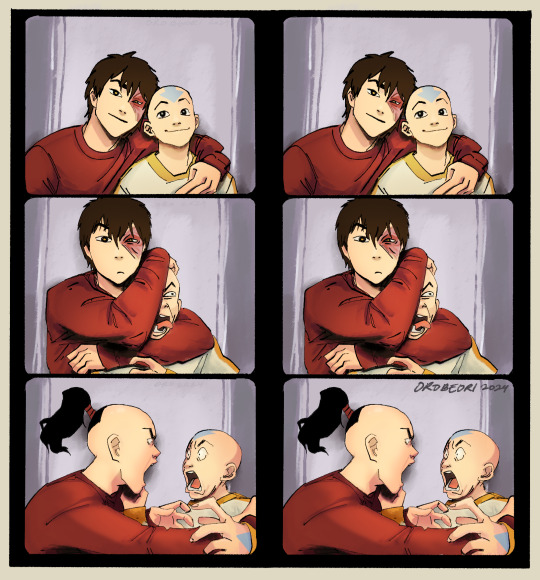
When the realization hits that you’ve finally captured the Avatar 💥💥💥
Continuation of my NATLA x ATLA photo-booth series that I hope to make more of, esp of Iroh and Ozai 💪, you can find the first one I did of Aang and Katara here‼️
Been trying to experiment more with how I draw them, and the process for this one in particular was very fun :’] Still not too sure on how I did the lighting lol, i need to study more on how light works 💀
Any duo/trio/group you'd like to see in particular?
1K notes
·
View notes
Text
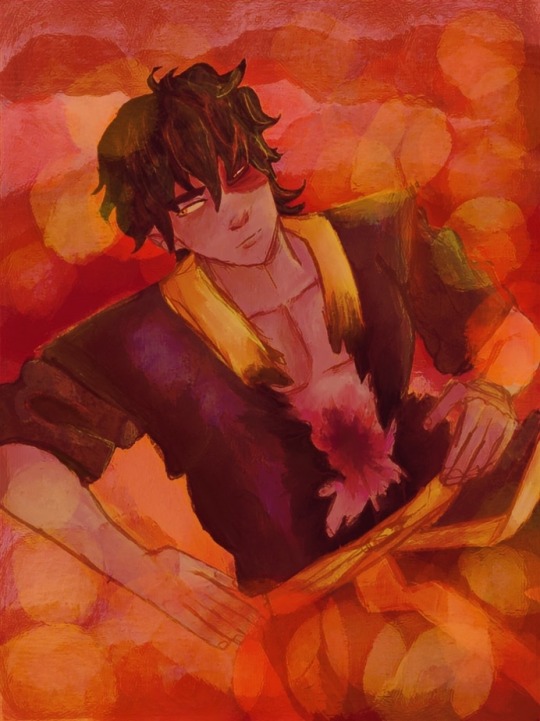
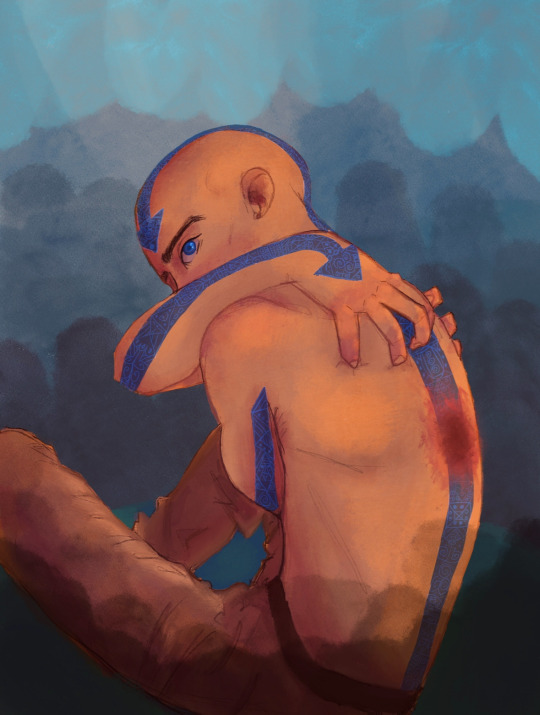
Matching scars gang!!
2K notes
·
View notes
Text
"A fifth point concerning nonviolent resistance is that it avoids not only external physical violence but also internal violence of spirit. The nonviolent resister not only refuses to shoot his opponent but has also refused to hate him. At the center of nonviolence stands the principle of love. The nonviolent resister would contend that in the struggle for human dignity, the oppressed people of the world must not succumb to the temptation of becoming bitter or indulging in hate campaigns. To retaliate in kind would do nothing but intensify the existence of hate in the universe. Along the way of life, someone must have sense enough and morality enough to cut off the chain of hate. This can only be done by projecting the ethic of love to the center of our lives.
In speaking of love at this point, we are not referring to some sentimental or affectionate emotion. It would be nonsense to urge men to love their oppressors in an affectionate sense. Love in this connection means understanding, redemptive good will. When we speak of loving those who oppose us, we refer to neither eros nor philia; we speak of a love which is expressed in the Greek word agape. Agape means understanding, redeeming good will for all men. It is an overflowing love which is purely spontaneous, unmotivated, groundless, and creative. It is not set in motion by any quality or function of its object. It is the love of God operating in the human heart.
Agape is disinterested love. It is a love in which the individual seeks not his own good, but the good of his neighbor (1 Cor. 10:24). Agape does not begin by discriminating between worthy and unworthy people, or any qualities people possess. It begins by loving others for their sakes. It is an entirely "neighbor-regarding concern for others," which discovers the neighbor in every man it meets. Therefore, agape makes no distinction between friends and enemy; it is directed toward both. If one loves an individual merely on account of his friendliness, he loves him for the sake of the benefits to be gained from the friendship, rather than for the friend's own sake. Consequently, the best way to assure oneself that love is disinterested is to have love for the enemy-neighbor from whom you can expect no good in return, but only hostility and persecution.
Another basic point about agape is that it springs from the need of the other person--his need for belonging to the best in the human family....
Agape is not a weak, passive love. It is love in action. Agape is love seeking to preserve and create community. It is insistence on community even when one seeks to break it. Agape is a willingness to go to any length to restore community. It doesn't stop at the first mile, but it goes the second mile to restore community. It is a willingness to forgive, not seven times, but seventy times seven to restore community...He who works against community is working against the whole of creation. Therefore, if I respond to hate with a reciprocal hate I do nothing but intensify the cleavage in broken community. I can only close the gap in broken community by meeting hate with love. If I meet hate with hate, I become depersonalized, because creation is so designed that my personality can only be fulfilled in the context of community....
In the final analysis, agape means a recognition of the fact that all life is interrelated. All humanity is involved in a single process, and all men are brothers...
A sixth basic fact about nonviolent resistance is that it is based on the conviction that the universe is on the side of justice. Consequently, the believer in nonviolence has deep faith in the future. This faith is another reason why the nonviolent resister can accept suffering without retaliation. For he knows that in his struggle for justice he has cosmic companionship. It is true that there are devout believers in nonviolence who find it difficult to believe in a personal God. But even these persons believe in the existence of some creative force that works for universal wholeness. Whether we call it an unconscious process, an impersonal Brahman, or a Personal Being of matchless power and infinite love, there is a creative force in this universe that works to bring the disconnected aspects of reality into a harmonious whole."
Rev. Dr. Martin Luther King, Jr., "An Experiment in Love" (1958)
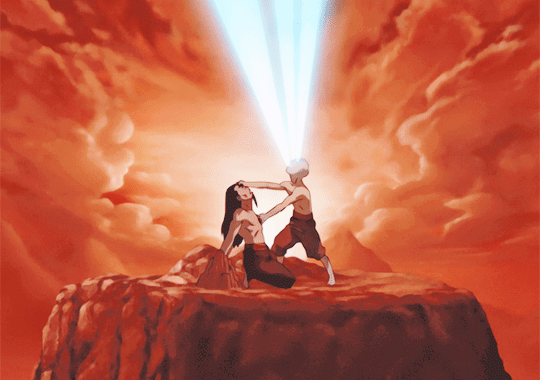
#took out some specific biblical references for impact and brevity#so many people on both sides make bad faith arguments on the finale#as if its not the ultimate evocation of nonviolent principles#there's so many more pieces in this mlk essay that relate to aang and atla#and he cites gandhi all along the way just not in these passages#aanglove
15 notes
·
View notes
Text
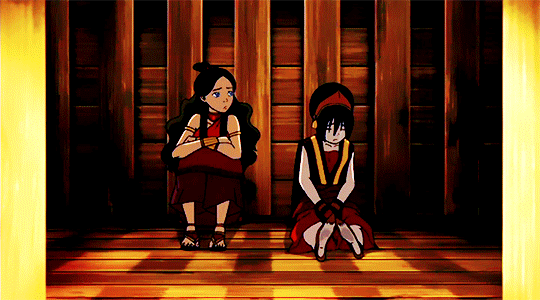


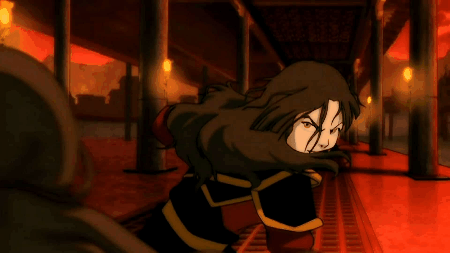
“Audre Lorde and Adrienne Rich have argued for an understanding of erotics that transcends procreative sexual contact and extends to the communities of women that emerge in response to oppressive regimes. In their view, heterosexist erotics are part of the compulsory heterosexuality that limits the full articulation of non-procreative desire and in which women lose many of their basic rights as property passed among men for the propagation of a phallocentric order. Sometimes, the relationships forged between women in response to oppressive regimes become physically sexual; sometimes they do not. From this perspective, sexual desire is not just a physical act but the root of all desire for action and unity and can exist in familial bonds (mother/daughter, sister/sister), among friends, and among all women. This desire should be viewed as a continuum that erases sexual stigma to allow for a larger sense of union and community forged through bonds between members of the same sex, which can always move toward sexual union and often are originally rooted in sexual desires suppressed by the regimes of compulsory heterosexuality. Lesbianism, thus, ceases to be pejorative to define a union of two women, usually presented in a butch-femme dichotomy, as something perverse or unnatural. In these formulations, lesbianism is a form of protest in which women find erotic fulfillment in each other and outside the confines of an erotics that must be focused on reproduction with a member of the opposite sex and is codified in heterosexual institutions such as marriage.
…
The obvious problem with transferring this premise to male homosexuality is that Rich’s use of Freud is too gendered to allow for that transference. It seems unlikely, however, that Rich intended to uphold Freudian sexual theories, which are generally deeply problematic for all queer and even non-queer identities. More likely, she was attempting to deconstruct the premise that Freud’s theory apply across gender lines, and in so doing she implicates the degree to which those theories fail to have universal applicability and, therefore, any applicability at all. If those theories lack universal applicability, then they must only have contingent and exceptionally specific application, which is to say that they have no applicability except for strictly within a limited Freudian perspective that does very little to explain the complexities of desire that circulate among members of lesbian and gay communities in the contextual ways that those communities conceive of themselves. Basically, she uses Freud to dismiss him, but she nonetheless proceeds to explain a version of Eros applicable to lesbian desire. She offers a theoretical framework to justify Lorde’s earlier theorizing about the multiple bonds that form between women, which Lorde places under the umbrella term erotic and in which she finds a source of power for women to define and shape their lives beyond being bound to men. Lorde and Rich claim Eros as a term for lesbian-identified women, and in so doing, they free it from its negative associations with Freud’s heterosexist rhetoric and make it a term with applicability to a broad range of desires beyond strictly heterosexual confines.
Though he never calls it Eros or erotic, John Howard, in Men Like That, effectively delineates the same concept for rural gay men when he attempts to explain the dynamism and movement that give “shape and scope” to the “queer life” of mid-century Mississippians (15). Though Mississippians had easy access to the nearby gay community in New Orleans, Howard pauses to explain that for gay men in rural Mississippi,
A more sporadic, on-the-ground, locally mediated queer experience prevailed. Tracking this experience and integrating the concept of networks with desire and pleasure finally allow a consideration of the human desire for friendship, companionship, love, and intimacy, as well as often unrelated, overtly sexual contact—homosocial as well as homosexual realms. (15)
This articulation of “human desire” reads as a version of gay erotics applied to male same-sex identity. This version of gay erotics uses sexual identity and desire to imagine and create new, nonheterosexist communities in a specific place and time. Howard explores how men in rural Mississippi fashioned means of interaction with each other in their seemingly isolated environment. Their erotic desires for unity created a distinct sense of identity. They found each other. They created connections. They did not simply waste away into death.
Gay erotics are a response for all queer-identified people to the oppressive regimes of compulsory heterosexuality that compel individuals into preset gender expectations and sexual roles. In the case of women (and men) who define themselves as, or find themselves defined as, queer/lesbian/homosexual, these erotics powerfully shape the way that we define ourselves in relationship to our surroundings and articulate our senses of self in relation to our own understanding of community and connection. Eros is at the heart of homosexual identity, only this Eros is not one of compulsory reproductive utility but of seeking likeness in an environment that defines one’s erotic drive as different. It is an oppositional drive, but one no less committed, and in fact driven, to unity than the heterosexual erotics articulated by Freud. In that formulation, gay desire is death. In this, it is life. And the outcome of gay desire is neither corrosive nor inhuman; it is, rather, a powerful drive simply to exist.”
— Phillip Gordon, Gay Faulkner: Uncovering a Homosexual Presence in Yoknapatawpha and Beyond
#aanglove#the best quick run down of queer feminist theory I’ve ever read tbh#because it goes into why and how it relates to all relational dynamics#which let’s you see that the point is not to essentialize gender nor to deny gender#but to recognize and allow for relationships of connection and reciprocity rather than hierarchy#allowing yourself and others to want and bond and live (and fuck nasty about it if the vibe is right)#and that our lives need not be utilitarian or nihilistic to be deeply meaningful and joyful!#that allowing oneself to desire is so linked to allowing ourselves to belong!!!#and I just love how Atla reiterates this over and over and over again#from a queer and decolonial perspective#zukaang#kazula#mailee#katoph#the paragraph I took out of this quote goes into Rich’s critique of the oedipus complex which would be really cool to compare to ozai!!#I just don’t believe in feminism without queerness#which is why I couldn’t stand the b*rbie movie
9 notes
·
View notes
Text
youtube
The vibes of this voice cast for avatar studios adult aang movie are soooo right!
Friends kept asking me about the Netflix live action and I kept telling them I didn’t care or have high expectations, but I am so hype for this. I just have a ton of faith in the og creators (Mike and bryan)—not expectations of perfection or something iconic, but reasonable expectations (based on Atla and lok and even the novels) for being offered deeply philosophical and challenging works with incredible animation all interested in the debts and relationships the works have to Asian peoples, cultures, innovations, and histories.
Can’t wait!!
21 notes
·
View notes

